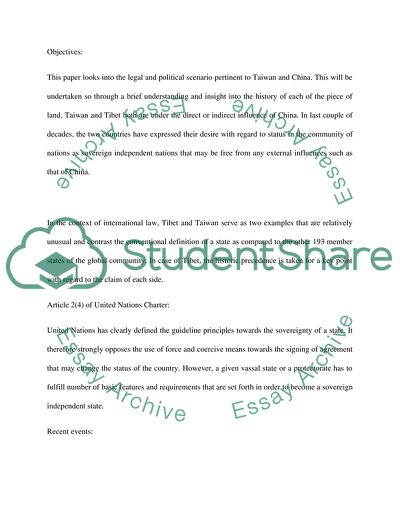Cite this document
(International Law: Taiwan and Tibet Research Paper Example | Topics and Well Written Essays - 2250 words, n.d.)
International Law: Taiwan and Tibet Research Paper Example | Topics and Well Written Essays - 2250 words. https://studentshare.org/politics/1865742-are-taiwan-and-tibet-states-under-international-law
International Law: Taiwan and Tibet Research Paper Example | Topics and Well Written Essays - 2250 words. https://studentshare.org/politics/1865742-are-taiwan-and-tibet-states-under-international-law
(International Law: Taiwan and Tibet Research Paper Example | Topics and Well Written Essays - 2250 Words)
International Law: Taiwan and Tibet Research Paper Example | Topics and Well Written Essays - 2250 Words. https://studentshare.org/politics/1865742-are-taiwan-and-tibet-states-under-international-law.
International Law: Taiwan and Tibet Research Paper Example | Topics and Well Written Essays - 2250 Words. https://studentshare.org/politics/1865742-are-taiwan-and-tibet-states-under-international-law.
“International Law: Taiwan and Tibet Research Paper Example | Topics and Well Written Essays - 2250 Words”. https://studentshare.org/politics/1865742-are-taiwan-and-tibet-states-under-international-law.


